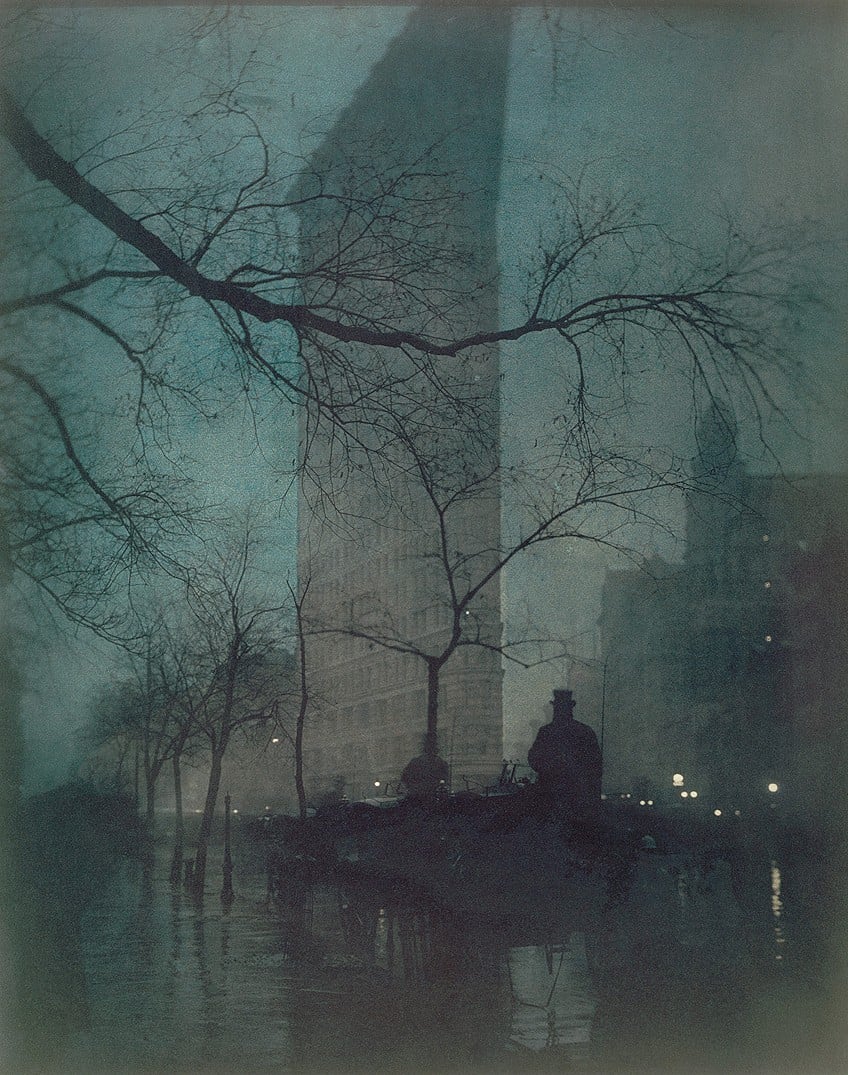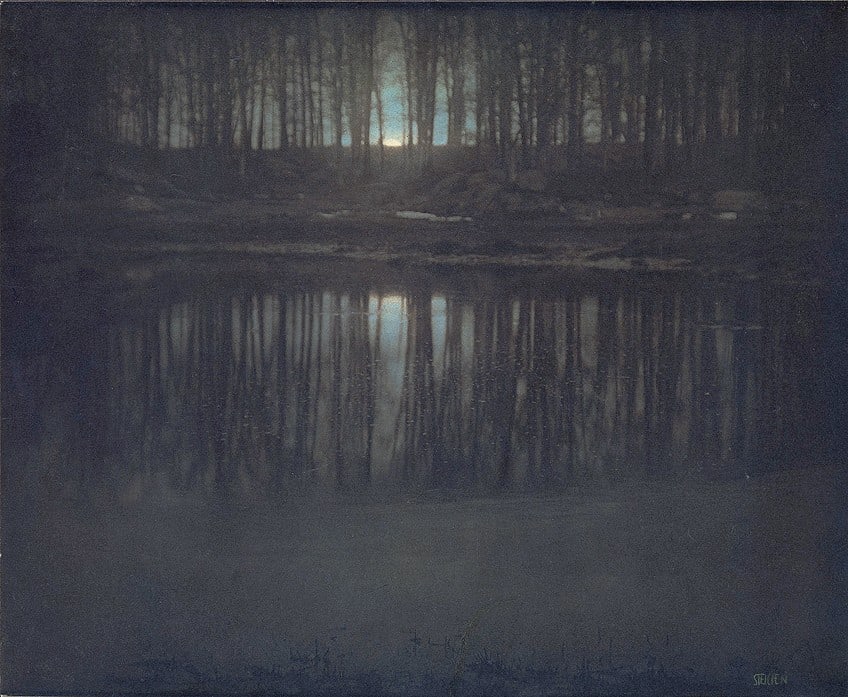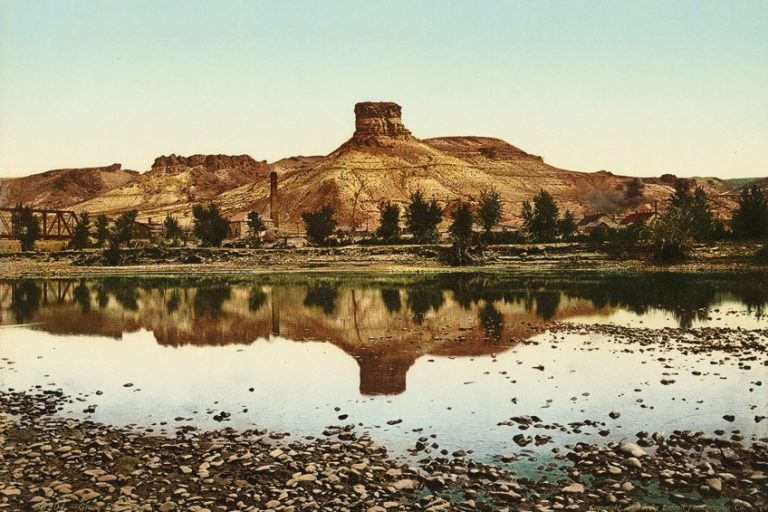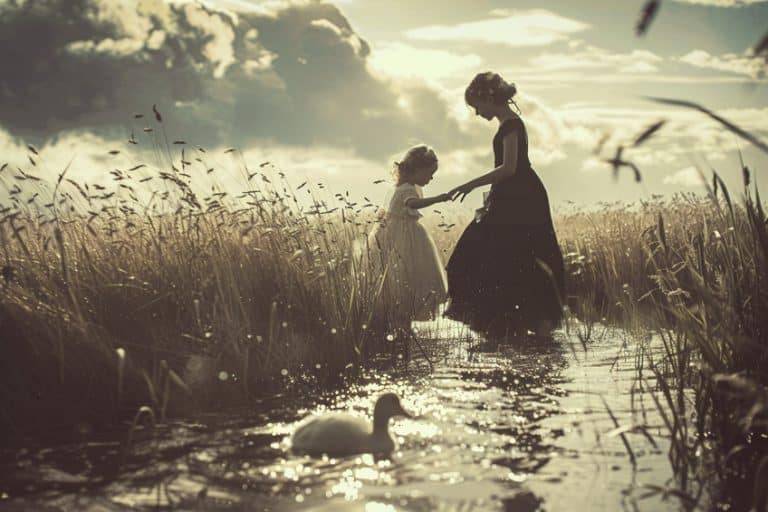Most Expensive Photographs – 15 Extravagant Photographs
Photography has proven to be a very popular hobby and profession over the decades. However, while most of us just post our photos on social media, those who work at the top of this profession are able to sell their photographs for extremely high prices at auction. But, what is the most expensive picture in the world? Today, we will list the most expensive photos ever sold at auction and find out why each one was regarded as so valuable.
Our List of the Most Expensive Photographs Ever Sold
Becoming a professional photographer can be a very expensive endeavor. Therefore, it should come as no surprise that they often charge a considerable fee for their photographic services. Then there are those photographers at the top of their game whose works are regarded as artworks and the combination of their years of experience and eye for the aesthetically pleasing means that they often sell their works for millions of dollars.
What makes the most expensive photographs ever sold so valuable, though? Let us examine each one and find out the unique stories behind these famous photos.
Le Violon D’Ingre (1924) by Man Ray – $12,400,000
| Artist | Man Ray (1890 – 1976) |
| Date Taken | 1924 |
| Medium | Gelatin silver print |
| Dimensions (cm) | 29 x 22 |
| Date Sold | 14 May 2022 |
Le Violon d’Ingres is regarded as the most expensive picture in the world and one of the 20th century’s most recognized and appreciated artworks. This shot exemplifies Man Ray’s commitment to artistic independence. Man Ray’s muse and partner, artist Alice Prin, was the sitter who posed for the famous photograph. The artwork was initially published in André Breton’s magazine Littérature in June 1924, the same year the piece was created.
The most expensive picture in the world has been regarded as a Surrealist symbol ever since its initial appearance.
The artist embellished Kiki’s back with the f-shaped sound holes that usually appear on a violin, likening her physique to that of the violin. Man Ray burned the f-hole forms onto the photographic paper at the spot on her back with a mask. He cut the shapes into a thick sheet of paper, placed it over a piece of photographic paper, and then subjected it to light, which caused the f-holes to be transferred onto the photographic paper.
Using the original negative in addition to an enlarger, Kiki’s image was then printed onto the sheet with the f-holes, and the two images were thus merged to produce this famous picture.
The Flatiron (1904) by Edward Steichen – $11,800,000
| Artist | Edward Steichen (1879 – 1973) |
| Date Taken | 1904 |
| Medium | Three-color halftone print |
| Dimensions (cm) | 21 x 16 |
| Date Sold | 10 November 2022 |

The Flatiron Building was completed in 1902 and quickly became one of New York’s most recognizable structures. It quickly drew the attention of photographers such as Edward Steichen and Alfred Stieglitz, who were attempting to develop photos in the pictorialist manner, comparable to painting.
Steichen colored the platinum print on which this image is based by layering pigment contained in a light-sensitive combination of potassium bichromate and gum arabic.
The photograph was taken by Steichen from the western side of Madison Square Park. He created three prints in tan, blue, and orange-like colors. The final product appears to be informed by Japanese woodcuts, which were fashionable at the time, as well as the Nocturnes paintings by American artist James McNeill Whistler, however, his subject is quite characteristically American.
Phantom (1999) by Peter Lik – $6,500,000
| Artist | Peter Lik (no date available) |
| Date Taken | 1999 |
| Medium | Color photograph |
| Dimensions (cm) | Unspecified |
| Date Sold | November 2014 |
Peter Lik’s favorite location for photography is in the Southwestern United States, where he constantly finds himself drawn to Arizona’s Antelope Canyon – sculpted by natural flowing water over millions of years. Peter photographed Phantom in a subterranean grotto, a magnificent black and white representation of a ghostlike apparition. Peter Lik has spent over 30 years following a calling to photograph and share the most beautiful locations on the planet.
A slew of awards were given to him during his career as a committed and gifted artist, an individual who came from modest circumstances in his home country of Australia.
However, there is a lot of heated debate surrounding his photography and the validity of the sale of this photograph. Lik, who was born in Australia, sells his art in tourist destinations such as Maui and Las Vegas, where visitors are typically pleased to bring home a gorgeous, large-scale landscape print that captures the essence of their stay. His customers typically lack an art background, and they have money to spare and regard Lik’s unthreatening work as an easy entry point into the thriving art market.
Rhein II (1999) by Andreas Gursky – $4,338,500
| Artist | Andreas Gursky (1955 – Present) |
| Date Taken | 1999 |
| Medium | C-print mounted to acrylic glass |
| Dimensions (cm) | 190 x 360 |
| Date Sold | 8 November 2011 |
This famous color photo portrays a section of the Rhine River near Düsseldorf. The image is readily recognizable as a view of a straight length of water, but can also be viewed as an abstract arrangement of horizontal bands of varied widths of hue.
The horizon line almost perfectly cuts the image in half in the center. The gloomy sky above it is a blue-gray.
The river is a smooth, continuous line between green grass stripes in the lower half of the photograph. A tiny trail may be seen at the bottom of the image in the near foreground. A small strip of groomed green grass runs underneath it. Gursky uses a medium format camera to capture his images, which he then scans into his computer to alter. His intention in employing digital technology is not to produce fictional imagery but to enhance the representation of things that already exist in the real world.
Spiritual America (1981) by Richard Prince – $3,973,000
| Artist | Richard Prince (1949 – Present) |
| Date Taken | 1981 |
| Medium | Ektacolor print |
| Dimensions (cm) | 60 x 50 |
| Date Sold | 12 May 2014 |
Richard Prince has been an advocate for the genre of re-photography, in which he appropriates previous photographs and uses layering, cropping, or combining processes to produce a new image. His most well-known re-photography project, the Cowboy series (1980-92), used the Marlboro Man from Marlboro cigarette advertisements.
His most expensive portrait, which sold for $3.9 million in 2014, sparked major criticism.
He rephotographed a naked portrait of 10-year-old Brooke Shields, which was the subject of a media-covered litigation between the girl’s mother and the original person who took the photograph. Prince’s work has consistently tackled the questions of photographic authorship as well as the deeper significance inherent in the pictures that comprise modern visual culture.
Untitled #96 (1981) by Cindy Sherman – $3,890,500
| Artist | Cindy Sherman (1954 – Present) |
| Date Taken | 1981 |
| Medium | Chromogenic print |
| Dimensions (cm) | 61 x 121 |
| Date Sold | 11 May 2011 |
Cindy Sherman casts a purposefully caustic eye on American culture, inadvertently connecting discipline and femininity, accidentally positioning herself as the leader of a new feminist movement. She literally incorporates herself into her art. Sherman creates a new dialogue with the audience by sharing diverse stories. “I try to make others recognize something about themselves through these images of me”, she says specifically.
This confusing composition aims to protest the sexism that every woman faces on a daily basis, whether consciously or unconsciously.
She criticizes the performative power of magazines through the same media that promotes the image of the body’s availability. She sought to highlight the media’s enticing yet repressive impact on individual and social identities. Cindy Sherman put the camera on herself in a vulnerable position of investigation during a decade when media was becoming widespread and attempted to disseminate the image of a strong feminine figure who could consume for herself.
Untitled #93 (1981) by Cindy Sherman – $3,861,000
| Artist | Cindy Sherman (1954 – Present) |
| Date Taken | 1981 |
| Medium | Chromogenic print |
| Dimensions (cm) | 61 x 121 |
| Date Sold | 14 May 2014 |
Sherman’s images were warmly welcomed by the art establishment and the critics when they were initially shown. Nevertheless, there were multiple debates on the topic of female victimization. Some observers regarded Untitled, #93, which depicts a blond woman sweating and grabbing at her sheets, as a woman who appeared to have been abused.
In actuality, this was not the artist’s aim at all. These images are all nameless for a reason: Sherman prefers not to title her works of art because she does not want to impose a narrative on them.
Sherman has made the audience participants in the act of observing and photographing. They are taken at what appears to be an extremely private time when these women are alone. And since they all appear to be in these positions of vulnerability, it makes us, those watching, very aware that we are being voyeurs.
To Her Majesty (1973) by Gilbert & George – $3,767,960
| Artist | Gilbert & George (est. 1967) |
| Date Taken | 1973 |
| Medium | Gelatin silver print |
| Dimensions (cm) | 145 x 350 |
| Date Sold | 30 June 2008 |
Gilbert Prousch is from San Martin de Tor, Italy, while George Passmore is from Plymouth, UK. They are rarely seen in public apart from each other and almost always wear suits that have become a “uniform” since their Singing Sculptures series. This photo is part of the couple’s Drinking Sculptures series and consists of 37 separate photos depicting them either drunk or ready to get intoxicated.
Untitled (Cowboy) (1998) by Richard Prince – $3,749,000
| Artist | Richard Prince (1949 – Present) |
| Date Taken | 1998 |
| Medium | Ektacolor photograph |
| Dimensions (cm) | 181 x 271 |
| Date Sold | 12 May 2014 |
Richard Prince started to display works from his Cowboys series in the early 1980s, in which he rephotographed the iconic Marlboro cigarette advertisements, clipping out any text and framing them like fine art. In doing so, he discovered a rich symbol in American society that represented adventure, self-sufficiency, and a rugged personality.
Starting in the 1950s, Marlboro advertisements depicted cowboys galloping over the wide-open landscape of the Wild West.
In jeans, boots, leather chaps, spurs, and a Stetson hat, the cowboy was easily recognizable. He is almost all white and is described as attractive, weathered, and fit. The image of the cowboy appeals to both women and men as both a sex symbol and a role model. His Cowboy series capitalizes on the commercial campaign’s opulent, high-budget, art-directed look. Prince changed nothing else in these already stunning images after removing the text and expanding them.
Dead Troops Talk (1992) by Jeff Walls – $3,666,500
| Artist | Jeff Walls (1946 – Present) |
| Date Taken | 1992 |
| Medium | Color photograph |
| Dimensions (cm) | 229 x 417 |
| Date Sold | 8 May 2012 |
This image is a representation of one of Wall’s complex stagings, which includes sets, cast, crews, and digital postproduction. The Mujahideen attack on a Soviet Army patrol near Mogor during the Soviet-Afghan War in the winter of 1986 is portrayed in this setup image, which is set in a lonely desert. The devastating strike left the 13 Soviet soldiers with apparent wounds and limbs as they appear as if almost from the dead.
In the photo, all the men seem to be out of character; for instance, one of them reveals his scars to another.
Three of the Mujahideen who killed them are portrayed at the scene; one is seen looking through a bag, while the legs of two others are shown holding the guns and ammunition that the fallen soldiers had gathered. The photographer was influenced by photos of war as well as 19th-century paintings by painters such as Francisco Goya. The photographer set up and established all of the composition’s elements, such as the soldiers’ positioning in the scene, their wounds, and their clothing.
99 Cent II Diptychon (2001) by Andreas Gursky – $3,346,456
| Artist | Andreas Gursky (1955 – Present) |
| Date Taken | 2001 |
| Medium | C-print mounted to acrylic glass |
| Dimensions (cm) | 207 x 337 |
| Date Sold | February 2007 |
Andreas Gursky is a German photographer noted for his massive digitally altered photos that explore commercial society and the hectic pace of modern life. His distinct compositional tactics produce striking images that cross the boundary between abstraction and representation.
Gursky also regularly used color manipulation to generate a more organized or homogeneous palette, like this famous photo, a disorienting diptych photographed in a 99 Cents Only store.
He used color manipulation to produce an explosion of recurring yellows, reds, and oranges flecked with pink, blue, black, and white. He also digitally placed a reflection of the items onto the ceiling, heightening the visual impact and creating the impression of being surrounded by a consumer society gone crazy.
Noire et Blanche (1926) by Man Ray – $3,131,533
| Artist | Man Ray (1890 – 1976) |
| Date Taken | 1926 |
| Medium | Gelatin silver print |
| Dimensions (cm) | 17 x 22 |
| Date Sold | 8 November 2017 |
The portrait shows Kiki de Montparnasse, the renowned French model, with her eyes closed and her expressionless head reclining on a table, holding a black African mask vertically on the table with her left hand. The image contrasts the model’s smooth oval white face, as if she were a living mask, with the gleaming black mask, likewise with eyes closed and a tranquil look. It also reflects the artist’s interest in African art, which had a significant effect on the aesthetic trends of the early 20th century.
It was photographed by Man Ray in 1926 and is one of his most renowned images from his period as a Surrealist.
Untitled Film Still #48 (1979) by Cindy Sherman – $2,965,000
| Artist | Cindy Sherman (1954 – Present) |
| Date Taken | 1979 |
| Medium | Gelatin silver print |
| Dimensions (cm) | 20 x 25 |
| Date Sold | 13 May 2015 |
This photo is by Cynthia Sherman and is part of a collection of 70 black-and-white pictures in which the artist poses as several stereotypical female cinema roles, including lonely housewife, vamp, and working girl. The printed photographs, set to imitate scenes from the 1950s and 1960s Hollywood, B movies, film noir, and European art-house films, emulate in scale, format, and quality the regularly staged “stills” used to sell films.
Sherman initiates a discussion about clichéd representations of women by photographing herself in similar situations. Whether she was the one who pressed the shutter or not, she is regarded as the photographer.
The pieces in Untitled Film Stills, on the other hand, are not regarded as self-portraits.
The Pond—Moonlight (1904) by Edward Steichen – $2,928,000
| Artist | Edward Steichen (1879 – 1973) |
| Date Taken | 1904 |
| Medium | Platinum print with applied color |
| Dimensions (cm) | 39 x 48 |
| Date Sold | February 2006 |

Steichen made prints of such artistic seductiveness using a laborious method of successive printing that they have never been surpassed. This picture of a pond in the woods in New York’s Mamaroneck is softly colored in the same way as Whistler’s Nocturnes and is a tone symphony of twilight, suggestiveness, and indistinction.
This is an early image taken by applying by hand light-sensitive gums, resulting in a multi-color print.
Only three known variations of the photograph are still known to exist, and each has its own characteristics because of the careful hand-layering of the gum. The moon rising over a reflected pond in Edward Steichen’s shot depicts the moon’s majesty and enigma, the silvery quality of its light, and its deceptive proximity to Earth. Steichen was demonstrating photography’s immense aesthetic potential with photos like these, putting it on par with drawing and painting.
Paris, Montparnasse (1993) by Andreas Gursky – $2,416,475
| Artist | Andreas Gursky (1955 – Present) |
| Date Taken | 1993 |
| Medium | Color photograph |
| Dimensions (cm) | 200 x 400 |
| Date Sold | 17 October 2013 |
The image portrays a work by French architect Jean Dubuisson, which was constructed between 1959 and 1964. The image was one of the first created after Gursky chose to utilize digital alteration, and what is portrayed cannot be seen in reality, since the view is obstructed by buildings on each side of the frame.
Gursky’s interest in architectural themes is evident in this image, and his method, as in previous works, is more like painting, recalling the works of Dutch artist Piet Mondrian, particularly his renowned grid designs, and German artist Gerhard Richter’s “Colour Charts”.
The asymmetry of the window treatments of Gursky’s individual rooms, like the multitude of Richter’s delicate tints and colors, each in its place, enlivens the huge, structured whole with a sense of abundant variation.
That completes our list of the most expensive photographs ever sold. We started our list with the most expensive picture in the world, Le Violon D’Ingre (1924), by Man Ray. There are several photographers who featured several times on the list, such as Man Ray, Andreas Gursky, Richard Prince, Edward Streichen, and Cindy Sherman. While Phantom by Peter Lik may feature high on the list, many people debate whether the sale even took place as it was a private sale and no one has ever claimed to be the owner of the photograph. Each of these photos are renowned for varying reasons, yet all of them manage to capture the imagination of the public, as well as high sums of money.
Frequently Asked Questions
What Is the Most Expensive Picture in the World?
The photograph that sold for the highest price at auction was Le Violon D’Ingre (1924) by Man Ray. In this famous photograph, Man Ray made the back of the sitter look like a violin by adding two f-hole shapes. This famous photograph sold in 2022 for $12.4 million at auction! No other photograph comes close to that incredibly high price! The second-highest price ever received at auction for a photo was $11,800,000. This was for the sale of Edward Steichen’s Flatiron (1904) photograph sold in 2022.
What Are a Few of the Most Expensive Photographs Ever Sold?
Le Violon D’Ingre (1924) by Man Ray takes first place at an astonishing $12.4 million! Some of the other most expensive photos ever sold include Rhein II (1999) ($4,338,500) and 99 Cent II Diptychon (2001) ($3,346,456) by Andreas Gursky. Several of Cindy Sherman’s photos have also sold for large sums of money such as Untitled #93 ($3,861,000) and Untitled #96 ($3,890,500). Man Ray also has another photo on the list of the most expensive photographs ever sold at auction, and it is known as Noire et Blanche (1926) ($3,131,533).
Jordan Anthony is a film photographer, curator, and arts writer based in Cape Town, South Africa. Anthony schooled in Durban and graduated from the University of the Witwatersrand, Johannesburg, with a Bachelor of Art in Fine Arts. During her studies, she explored additional electives in archaeology and psychology, while focusing on themes such as healing, identity, dreams, and intuitive creation in her Contemporary art practice. She has since worked and collaborated with various professionals in the local art industry, including the KZNSA Gallery in Durban (with Strauss & Co.), Turbine Art Fair (via overheard in the gallery), and the Wits Art Museum.
Anthony’s interests include subjects and themes related to philosophy, memory, and esotericism. Her personal photography archive traces her exploration of film through abstract manipulations of color, portraiture, candid photography, and urban landscapes. Her favorite art movements include Surrealism and Fluxus, as well as art produced by ancient civilizations. Anthony’s earliest encounters with art began in childhood with a book on Salvador Dalí and imagery from old recipe books, medical books, and religious literature. She also enjoys the allure of found objects, brown noise, and constellations.
Learn more about Jordan Anthony and the Art in Context Team.
Cite this Article
Jordan, Anthony, “Most Expensive Photographs – 15 Extravagant Photographs.” Art in Context. August 10, 2023. URL: https://artincontext.org/most-expensive-photographs/
Anthony, J. (2023, 10 August). Most Expensive Photographs – 15 Extravagant Photographs. Art in Context. https://artincontext.org/most-expensive-photographs/
Anthony, Jordan. “Most Expensive Photographs – 15 Extravagant Photographs.” Art in Context, August 10, 2023. https://artincontext.org/most-expensive-photographs/.









